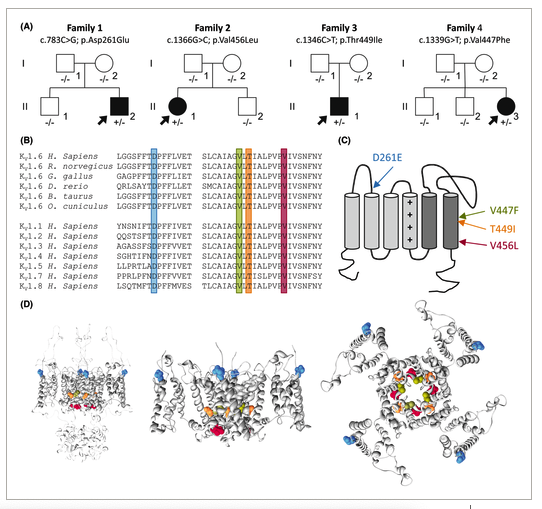


Different behavioral, cognitive, and psychiatric comorbidities are associated with pediatric and adult epilepsy, and in some cases with intellectual disability (ID).2 At least 40% of epilepsies are believed to be caused by genetic factors,3 of which, only 1% are Mendelian epilepsies.4 In the majority of these cases the heritability is still unexplained.5, 6 Roughly a third of the known genes associated with Mendelian epilepsies encode ion channels.7
The voltage-gated potassium channel (KV) superfamily includes more than 40 individual subunits grouped into 12 distinct sub-families (KV1-12). KV channels conduct the key repolarizing current of action potentials that regulate various physiological processes including neuronal and muscle excitability and the secretion of hormones and neurotransmitters.8, 9 They consist of four α-subunits, each of which is composed of six transmembrane helices (S1-S6).8, 9 Helices S1-S4 of each subunit form a regulatory voltage sensing domain (VSD), whereas helices S5-S6 of all four subunits form a central potassium conducting pore. Upon depolarization, the VSDs undergo conformational transitions that result in channel opening (activation), whereas hyperpolarization closes (deactivates) the pore.9 Upon prolonged depolarization, some KV channels undergo inactivation typically mediated by channel N-terminus occluding the pore (N-type inactivation).
KVβ-subunits can modulate α-subunit activity and induce N-type inactivation with their N-terminus.10 Pathogenic variants in genes encoding KV subunits may exert one or more effects on the assembly, trafficking, or the kinetics or the voltage dependence of the opening-closing-inactivating transitions of the channel, thereby disturbing membrane excitability or action potentials, leading to neurological diseases.11, 12